Abstract
Azolates, i.e. deprotonated azoles that are 5-membered heterocycles with two or more nitrogen atoms, can bridge transition metal ions to form metal-azolate frameworks (MAFs) as a sort of metal-organic frameworks (MOFs). MAFs are designable, stable, flexible, modifiable, structurally diversified. Moreover, many MAFs have unique features, such as nanocage-like pore structures, rich coordinated and even uncoordinated/free nitrogen atoms, pendent side alkyl groups, which can render high stability, molecular recognition, and other properties for diverse applications.
We were the first to discover several zinc imidazolates with permanent zeolitic MOF structures including Zinc(II) 2-Methylimidazolate (MAF-4, and well-known as ZIF-8) before the term of ZIFs appeared. In this presentation, the basic design strategy and advantages, and applications of MAFs, especially in olefin separation, CO2 reduction, as well as MAF-derived porous
nitrogen-doped carbon-based nanocluster and single-atom catalysts, will be presented.
Biography
Xiao-Ming Chen was granted his BSc (1983) and MSc (1986) degrees from Sun Yat-Sen University (SYSU), and PhD degree (1992) from The Chinese University of
Hong Kong. He joined the Chemistry Faculty at SYSU in 1992, and was promoted to a professor in 1995. He is Member of Chinese Academy of Sciences since 2009. His research interests include design, synthesis, structures, and properties of coordination complexes and coordination polymers (esp. metal-organic frameworks). He has published 540 papers. He won a number of prestigious science awards, including China National Natural Science Prize (2007), TWAS prize in Chemistry (2012), Khwarizmi International Award (2020), International Award of Japan Society of Coordination Chemistry (JSCC) (2020), as well as Highly Cited Researcher in Chemistry (2014-2022).
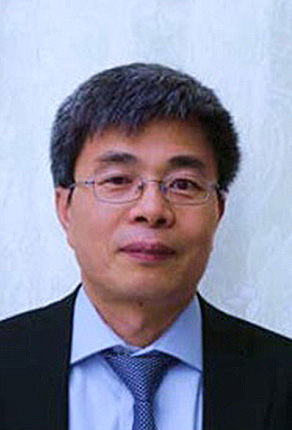
Abstract
Electrocatalysis plays a key role in many electrochemical energy conversion technologies such as fuel cells and water/seawater electrolysis to green hydrogen production. Liquid fuel cells such as direct methanol/(bio-)ethanol fuel cells have been regarded as a promising alternative for the power supply for portable and automotive applications thanks to their simplicity of using directly liquid fuels in the feed. The bio-ethanol fuel can be obtained from fermentation process of biomass and has been considered as a green and carbon neutral chemical. In addition, ethanol is non-toxic and has high gravimetric and volumetric energy density, 12 electrons per ethanol molecule could be extracted if fully electro-oxidized to CO2. The fundamental key challenge in the direct ethanol fuel cell (DEFC) is to rationally design efficient and low-cost catalysts to completely oxidize ethanol to release maximum 12 electrons at a lower over-potential such to achieve maximizing DEFC power output. On the other hand, selective partial oxidation of ethanol to acetic acid would be useful to co-produce valuable chemicals and generate electricity without CO2 emission. An insight into the structure-reactivity and structure-selectivity relationships is the prerequisite to the effective design of the desirable high-performance electrocatalysts.
In this talk, recent progress on the development of low-cost electrocatalysts for both advanced direct liquid fuel cells and water/seawater electrolysers for green hydrogen production will be reported. Fundamental studies have been performed, employing combined electrochemical in-situ FTIR spectroscopy and density functional theory (DFT) atomistic modeling, to understand the reaction mechanism and structure-reactivity relationships of a series of low-cost model and practical nano-catalysts, unsupported and supported on various substrates such as oxides and carbides, towards methanol and ethanol electrooxidation under practical fuel cell operating conditions. The electrocatalytic activity and selectivity of nanocrystals/nanocatalysts have been found to be highly dependent on the composition, surface morphology and supports, largely attributing to electronic effect, surface atomic arrangements and coordination. For an example, it has been found that oxide supports enhanced Pt catalysts for methanol oxidation via a new mechanism compared to that on carbon support Pt. The effect of WC supports on the thin Pt catalyst layers towards alcohol oxidation and water splitting reactions (hydrogen evolution reaction and oxygen evolution reaction) has also been revealed by both DFT modelling and experimental data.
The new understanding of the reaction mechanisms at atomic and molecular level has been fed into the new catalyst development. Both the electrocatalysis mechanism studies and the novel electrocatalyst material development will be reported in this presentation.
Biography
Prof. LIN is the University Special Envoy for East Asia, Professor of Chemical Engineering and Departmental Director of Research at Loughborough University, UK. He is a Fellow of the UK Royal Society of Chemistry (FRSC), and a Fellow of the International Association of Advanced Materials (FIAAM, Sweden). He has expertise in low-cost Green Hydrogen production from Seawater, micro-algal biofuel production from Seawater, Clean Energy from Renewable Resources, Chemistry and Chemical Engineering (Physical Chemistry, Electrochemistry, Electrocatalysis and Electrochemical Engineering).
The primary themes of his research are related to clean energy, environment, and sustainability. He collaborates internationally and has led a significant number of externally (EPSRC, industry, RS etc) funded projects, ranging from fundamental understanding of seawater splitting electro-catalysis at atomic and molecular levels to applied R&D in sustainable energy materials, net zero green hydrogen production from seawater electrolysis using renewable resources, fuel cells, batteries, and ozone generation from water for water treatment and advanced oxidation technologies. He has an output of over 200 publications, 6 patents and contributions to 2 spinouts. Some recent papers are published in Chem. Soc. Rev., Joule, Energy Environ. Sci., JACS, PNAS, Angew. Chem. Int. Ed., Chem., ACS Catalysis, Applied Catalysis B: Environmental, ACS Energy Lett., Advanced Energy Materials, ACS Appl. Mater. & Interfaces, Nano Energy, Electrochemical Energy Reviews, and Chemical Engineering Journal.
After obtaining his BSc in chemistry, MSc in physical chemistry and PhD in electrochemistry, from Xiamen University, he was appointed as a Lecturer then an Associate Professor at the same University, before embarking on his true international academic adventure. He was a Senior Visiting Scholar at Hong Kong University and Case Western Reserve University; held two prestigious Research Fellowships awarded by the Humboldt-Foundation and Max-Planck-Society, working with Nobel Laureate Prof. Ertl in the Fritz-Haber-Institute in Berlin, Germany. In the UK, he was a Research Fellow (funded by EPSRC), Visiting Lecturer, Senior Research Fellow, and a Founding Director of two spinouts at Newcastle University (1999-2008); and was a Lecturer (2009-2012) and Reader/Research Professor (2013-2015) at Queen’s University Belfast (QUB). He joined Loughborough University in December 2015, taking up the post of Professor of Chemical Engineering, and was appointed as the Director of Research for the Department of Chemical Engineering in March 2019. He holds 5 Visiting Professorships at five leading universities in China as well as a Visiting Research Professor title from QUB.
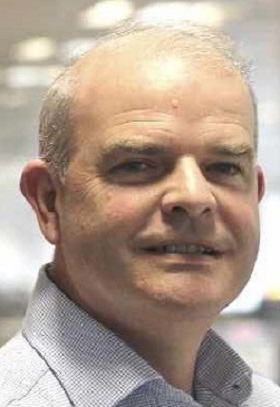
Abstract
The iconic organometallic 'sandwich' compound, ferrocene, has been studied for a myriad of different applications, spanning the fields of catalysis, materials chemistry and beyond, and even after 70 years, new uses for ferrocene are still being discovered. One particular field where ferrocene has gained interest is that of molecular electronics.
Ferrocene has exceptionally well-defined redox chemistry that has seen it often included into molecular architectures, particularly involving metal-alkynes, as an electroactive component. These electronic properties, alongside the versatile substitution chemistry of ferrocene, has recently been exploited by us in developing highly efficient and stable perovskite solar cell devices. The talk will cover our recent findings in utilising ferrocene in modern nanoelectronic devices[1, 2] and within the layer structure of perovskite solar cells[3]
References
Biography
Nick Long holds the Sir Edward Frankland BP Endowed Chair in Inorganic Chemistry at Imperial College London. He is a leader in applied synthetic inorganic and organometallic chemistry, with research interests focussing on transition metal and lanthanide chemistry for the synthesis of functional electronic and renewable energy materials, homogeneous catalysts and probes for biomedical imaging. He has over 300 publications, with around 14000 citations, an h-index of 56, and i10-index of 160. His work has recently been recognised by a Royal Society Wolfson Merit Award (2018), the Royal Society of Chemistry Frankland Award (2020), and the Royal Society of Chemistry Interdisciplinary Prize (2023).
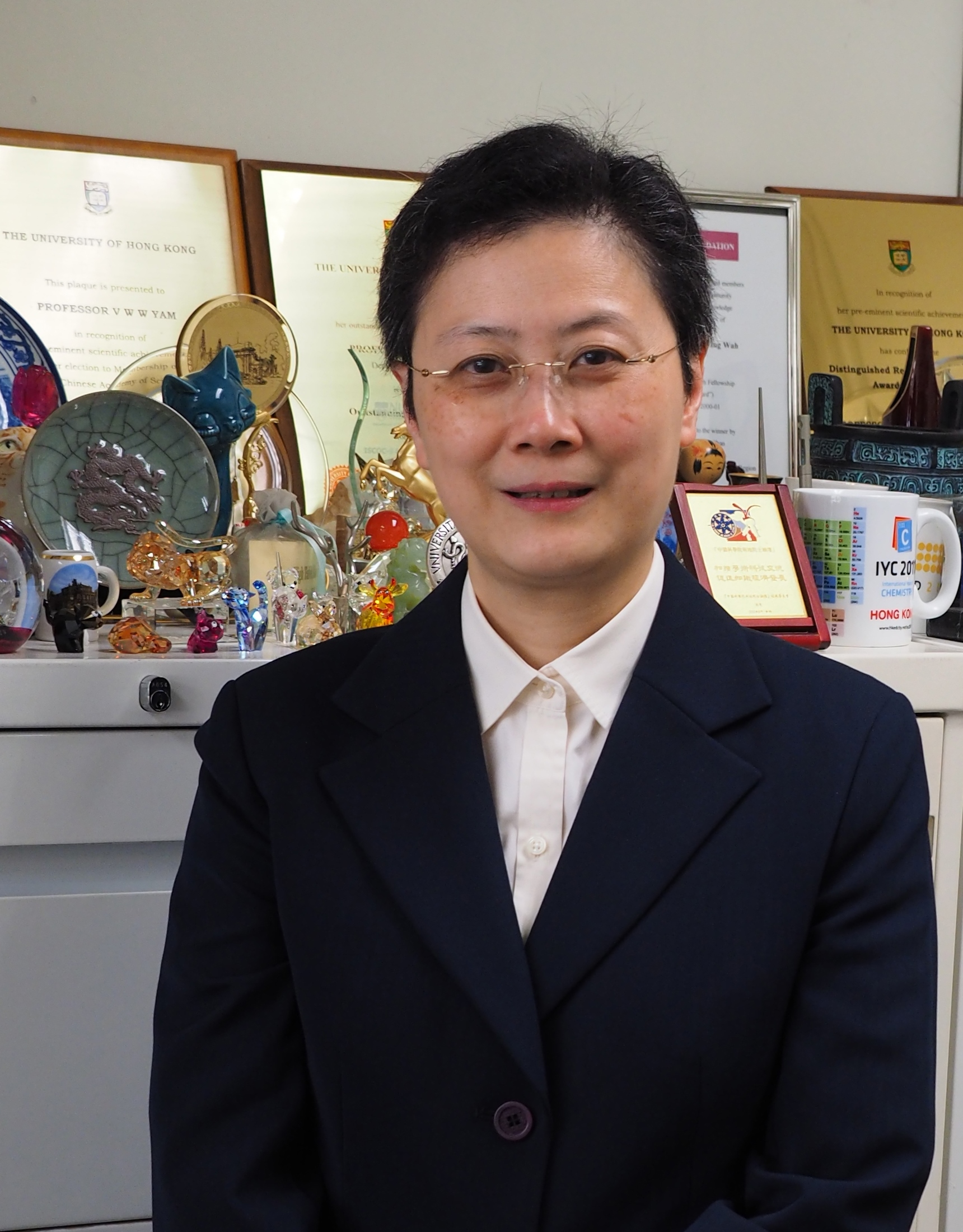
Abstract
Recent works in our laboratory have shown that novel classes of light-absorbing and luminescent metal-containing molecular materials could be assembled through the use of various discrete metal-ligand chromophoric motifs. In this presentation, various strategies for the design and synthesis of new classes of chromophoric and luminescent metal complexes will be described. These simple discrete metal complexes can undergo supramolecular assembly to give a variety of nanostructures and morphologies with different colors and emission properties. Subtle changes in the microenvironment, conformations and nanostructured morphologies have led to drastic changes in both the electronic absorption and emission properties of these hierarchical supramolecular assemblies and nanostructures. Explorations into the underlying factors that govern their structures, properties and morphologies and their assembly mechanisms have provided new insights into the interplay of the various intermolecular forces for the directed assembly of metal-containing soft materials and hybrids. Manipulation of the electronic effects, molecular conformation, orientation and assembly has led to the control of the excited states in novel functional materials and supramolecular assemblies. The exploration into the potential applications and functions of these nanostructured functional materials will also be described.
Biography
Vivian W.-W. Yam obtained both her BSc (Hons) and PhD from The University of Hong Kong, and is currently the Philip Wong Wilson Wong Professor in Chemistry and Energy and Chair Professor of Chemistry at The University of Hong Kong. She was elected to Member of Chinese Academy of Sciences, International Member (Foreign Associate) of US National Academy of Sciences, Foreign Member of Academia Europaea, Fellow of TWAS and Founding Member of Hong Kong Academy of Sciences. She was Laureate of the 2011 L'Oréal-UNESCO For Women in Science Award. She has received a number of awards, including the Josef Michl ACS Award in Photochemistry, RSC Ludwig Mond Award, RSC Centenary Medal, Porter Medal, State Natural Science Award, Bailar Medal, Inter-American Photochemical Society (I-APS) Presidential Award, etc. Her research interests include inorganic/organometallic chemistry, supramolecular chemistry, photophysics and photochemistry, and metal-based molecular and nano-assembled functional materials for sensing, organic optoelectronics and energy research.
Abstract
Rare earth elements activate a wealth of luminescent materials. By virtue of the ladder-like energy levels in the 4f electron configuration, rare earth ions can generate tunable emissions ranging from ultraviolet, to visible and near-infrared through downshifting, upconversion and quantum-cutting processes[1]. Rare earth luminescent materials are featured with large (anti-)Stokes shift, excellent photostability, sharp emission bandwidth, long emission lifetime, widely-spread emission wavelength, high photon conversion efficiency, etc. These attractive optical properties endow rare earth luminescent nanomaterials with great application potential in fields including lighting and displays, bioimaging, advanced health care, energy conversion and so on[2]. With the development of nanoscience, rare earth luminescent nanomaterials are enabled with unprecedented excitation/emission tunability, meanwhile, a new avenue toward biomedicine is established. In the recent twenty years, we have carried out systematic investigations concerning rare earth luminescent nanomaterials (Figure 1). We established the single-source thermal decomposition method to synthesize monodisperse rare earth nanocrystals with controllable composition, size, morphology and phase structure, in which the correlation between “lanthanide contraction” effect and the phase structure of resulting rare earth nanocrystals was disclosed[3,4]. By investigating the regulation rules of upconversion and near-infrared emissions of rare earth nanomaterials, we unraveled the influence from composition, local coordination structure and core/shell structure on the excitation/emission properties[5–8]. A series of highly efficient and multicolor rare earth luminescent nanomaterials were obtained. Benefiting from the low auto-fluorescence background and remarkable penetration depth of upconversion and near-infrared emissions, we achieved bioimaging with C. elegans, zebra fish and mouse. The biotoxicity of rare earth nanomaterials was assessed with C. elegans, which showed that rare earth nanomaterials were highly biocompatible with no obvious biotoxicity[9]. Recently, we developed a series of rare earth luminescent nanoprobes for high-resolution bioimaging and theranostics[10].

Biography
Chun-Hua Yan received his Ph.D. in 1988 from Peking University. He was promoted to a full professor in the Department of Chemistry at Peking University in 1992. He is currently serving as the Editor-in-Chief for J. Rare Earths (Elsevier). He was elected as a Member of Chinese Academy of Sciences in 2011, and Fellow of the Academy of Sciences for the Developing World (TWAS) in 2012. His main research fields are rare earth functional materials, rare earth separation processes and industrial applications.
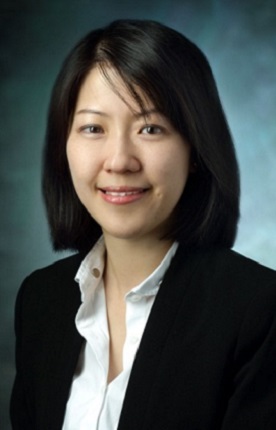
Abstract
Chemical Exchange Saturation Transfer (CEST) MRI enables the detection of the presence of millimolar concentrations of molecules in vivo, which facilitate the detection of important biological molecules such, as proteins and sugars, as well as drugs already approved for clinical use non-invasively. In this talk, I will describe how CEST could image a variety of molecules without additional labeling, i.e. a label-free approach. This includes glucose and its analogs based on the exchange of their hydroxyl protons with water protons; and promising CEST applications in imaging cancers and diseases in the brain. Various approaches have been developed to reveal pH changes in tumors and the drug delivery efficiency. While this uniqueness has raised early enthusiasm, the application of CEST MRI is not trivial. For example, the imaging glucose in brain tumors and Alzheimer’s disease could reveal (i) glucose delivery and transport to assess blood brain barrier integrity, (ii) glucose and its analogs taken up by cells to identify abnormality (e.g. cancer vs healthy), and (iii) clearance of glucose to assess tissue drainage such as the glymphatic system. To assess these opportunities of imaging molecules using CEST MRI, the imaging of amide protons of proteins, hydroxyl protons of glucose and protons of biomaterials for drug delivery will be discussed. This showcases the journey of specific CEST MRI contrast from preclinical research to clinical applications.
Biography
Prof. Chan received her BSc and PhD degrees from The University of Hong Kong. Her PhD thesis entitled ‘Gadolinium complexes containing polyaminocarboxylate ligands for the use of magnetic resonance imaging (MRI) contrast agents’ was advised by Prof. WT Wong. She then completed post-doctoral fellowship in magnetic resonance imaging (MRI), and became an Assistant Professor at Department of Radiology, Johns Hopkins University School of Medicine (JHMI) in 2014. She joined the Department of Biomedical Engineering, City University of Hong Kong in 2016, and became Associate Professor in 2019. She is now a Professor at CityU and an adjunct faculty at JHMI. She is also the Director of Hong Kong Centre for Cerebro-cardiovascular Health Engineering (COCHE) at HKSTP. In 2022-2023, Prof. Chan received the RGC Research Fellowship Award, which recognizes her contributions to Chemical Exchange Saturation Transfer (CEST) MRI.
Prof. Chan's research focuses on the development of biomaterials and molecular imaging approaches to facilitate the clinical translation of cancer therapy and cell therapy, and early diagnosis of neurodegenerative diseases. Her pioneering work with Prof. Peter van Zijl of imaging glucose utilization in the brain has implications on diagnosis and therapy in cancers and many neurodegenerative diseases. Her recent works demonstrated CEST MRI could identify the abnormal utilization of glucose in the brain at early stages of Alzheimer’s disease. Her team also develops techniques to effectively image and deliver drugs/cells to the brain non-invasively. She published over 70 peer-reviewed articles, including a cover article in Nature Materials, Science Advances, Theranostics, Stroke and ACS Applied Materials & Interfaces; and leading imaging journals. She is serving two editorial boards among the five leading imaging journals, named Magnetic Resonance in Medicine, NMR in Biomedicine, Journal of Magnetic Resonance Imaging, NeuroImage and Radiology. She is the deputy editor in Magnetic Resonance in Medicine, who oversees all the CEST and MT manuscripts globally.
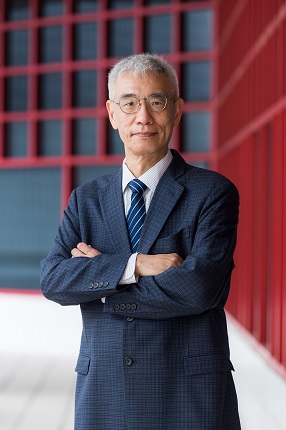
Abstract
The self-assembled square-planar Pt(II) metal complexes were the best near infrared (NIR) emitting phosphors. This is due to the fact that, our designed Pt(II) emitters have a strong tendency in forming aggregated oligomers, to which the excited state characteristics are now dominated by the MMLCT transition with lowered emission energy in comparison to the monomer. Upon excitation, the delocalized exciton therefore results in the exciton-vibration decoupling that reduces the rate of internal conversion, which virtually bypasses the radiationless quenching imposed by the energy gap law. Moreover, after incorporation of deuterium isotope substitution, it rendered the efficient NIR emitting Pt(II) complexes with peak wavelength approaching 1000 nm and beyond, together with the significantly improved device efficiencies.
Alternatively, the homoleptic Ir(III) carbene complexes were particular suitable in serving as the blue emitting OLED phosphors. These carbene complexes exhibit both the destabilized T1 and MC dd excited states due to the high lying π* orbital of carbene fragments and stronger Ir-C bonding interaction. Hence, tuning emission to true-blue color required stabilization of T1 state via addition of electron deficient substituent(s) at the carbene entity, resulting in the increased energy gap between the T1 excited state and dd quenching state. The enlarged energy gap retarded the non-radiative decay process, making them one of the best candidates in showing both the efficient and durable blue phosphorescence.
Biography
Professor CHI, Yun received his bachelor degree in chemistry from National Tsing Hua University in 1978 and doctoral degree under Prof. John R. Shapley from University of Illinois at Urbana-Champaign in 1986. After spending one year as postdoctoral fellow with Prof. Dietmar Seyferth at M.I.T., he joined the Department of Chemistry, National Tsing Hua University in 1987 and promoted to professor in 1991. During his tenure in NTHU, he was awarded the Academic Award, the National Chair Professorship, and Permanent National Chair Professorship of Taiwan in 2006, 2011, and 2016, respectively. He moved to the Department of Materials Science and Engineering of City University of Hong Kong in 2018.
Abstract
Ensuring a level playing field is crucial for upholding the integrity and fairness of equine sports such as horseracing and equestrian events. Racing chemistry, which refers to the scientific study and application of various disciplines including pharmacology, biochemistry, and analytical chemistry in the context of horseracing, plays a vital role in deterring and detecting the use of prohibited substances or practices with an ultimate goal to ensure fair competition and safeguard equine welfare. This presentation highlights the importance of racing chemistry in sustaining the integrity of equine sports, with a focus on recent analytical advancements in equine doping control testing. In addition to conventional testing methods involving established techniques, recent years have seen the emergence of omics-based approaches for drug testing in equine sports. These innovative methodologies, including transcriptomics, proteomics, and metabolomics, provide a comprehensive and in-depth analysis of biological samples, enabling the detection of substances that were previously challenging to identify. Furthermore, this presentation will showcase the pioneering implementation of an accredited transgene testing method within the racing industry.
Biography
Emmie Ho is the Head of Racing Laboratory of the Hong Kong Jockey Club. After attained her PhD degree from the University of Hong Kong, she joined the Racing Laboratory and has involved in doping control testing and related research for over 20 years. She has over 100 publications in international refereed journals and proceedings. She has been awarded as Fellows of the Royal Society of Chemistry as well as the Association of Official Racing Chemists for over 10 years. Apart from her involvement in various international regulatory committees for horseracing, she contributes to local tertiary institutes, such as being the Chair of the Faculty of Science Advisory Committee of the Hong Kong Baptist University, an honorary assistant professor and adjunct professor in the University of Hong Kong and the Hong Kong Polytechnic University respectively. Emmie is also a member of Accreditation Advisory Board of the Hong Kong Accreditation Service. .
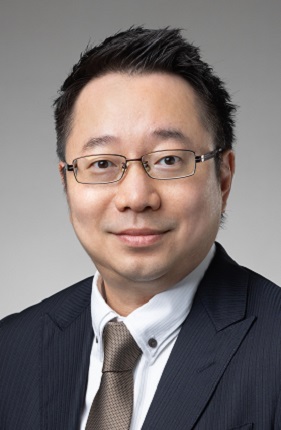
Abstract
Biaryl phosphines bearing C(Ar)−C(Ar) axial chirality are commonly known and have been successfully applied in many asymmetric catalyses. Nevertheless, the development of chiral ligand having axially chiral C(Ar)−N backbone remains elusive due to its undesirable less restricted rotational barrier. In fact, it is highly attractive to overcome this challenge in ligand development as the incorporation of N-donor component at the chiral axis is more favorable towards the transient metal coordination and thus a better outcome of stereocommunication is anticipated to the approaching substrates. Herein, we present a rational design of a new collection of chiral phosphines featuring a C−N axial chirality, and their applications in enantioselective Suzuki-Miyaura cross-coupling for accessing highly steric hindered tetra-ortho-substituted biaryls (26 examples up to 98:2 e.r.). It is worth noting that the embodied carbazolyl framework is crucial to succeed the reaction, by the fruitful steric relief of bulky substrate coordination and transmetallation via a fleeting Pd-N jumping to Pd-π fashion. DFT calculation reveals an interesting Pd-arene-walking characteristic across the carbazolyl plane for attaining a lower energy-preferred route in catalytic cycle. The theoretical study successfully predicts the stereooutcome and matches the enantioselectivity with the experimental results.
Biography
Prof. Fuk Yee (Michael) KWONG is currently Department Head and Professor in the Department of Chemistry at The Chinese University of Hong Kong (CUHK). He completed his Ph.D. at CUHK in 2000 before his postdoctoral training at the Massachusetts Institute of Technology as a Croucher Foundation Postdoctoral Fellow (2001-2003). Prof. KWONG has been an elected member of The Hong Kong Young Academy of Sciences (since 2020). He was the recipient of the Croucher Foundation Senior Research Fellowship (2013). He was awarded the Second-class Prize in Natural Science Award from the Ministry of Education (2014). His research interests are design of new phosphine ligands and their applications in new cross-coupling processes and enantioselective transformations.

Abstract
Environmental Emerging Contaminants (ECs) refers to a broad spectrum of chemicals, including pharmaceuticals and personal care products, microplastics etc., that are ubiquitous in our environment. ECs are of growing concern due to their potential hazard to the environment and human health. Indeed, humans are continuously exposed to a huge number of chemicals from the environment, food and consumer products. Our research aims to establish links between chemical exposures, effect biomarkers and study their potential health outcomes. The overall goal is to explore and deal with risks associated with ECs, thereby to create a sustainable future for both humans and the environment.
Biography
Professor Kelvin Leung is a professor and Head of the Department of Chemistry (Hong Kong Baptist University). His research focuses on atomic spectrometry and environmental analytical chemistry. His current research in atomic spectrometry involves investigation of the interaction between exogenous and endogenous elements within the biological system and human body through total elemental analysis, speciation and bioimaging. Utilizing machine learning, acquired elemental information can be used to develop early medical diagnostic methods for related diseases. As for environmental analytical chemistry, research focuses on developing analytical methods to analyze emerging contaminants in complex matrices, studying the environmental fate of emerging contaminants and exploring their impact on human health. Over the years, he has led more than thirty funded projects on the applications of analytical spectrometry, as well as environmental science from General Research Fund, Innovation and Technology Fund, State Key Laboratory of Environmental and Biological Analysis, Environment and Conservation Fund, and Shenzhen Science, Technology and Innovation Commission Fund, cumulative funding over tens of millions HK dollars. He has published over a hundred publications on well-recognized scientific journals, such as Chemical Engineering Journal, Journal of Hazardous Materials, Water Research, Environment International, Environmental Science & Technology, PNAS, Science of the Total Environment, Chemosphere and Analytical Chemistry. He is currently the youth editor of the journal The Innovation, as well as editorial board member of Science of the Total Environment, Ecotoxicology and Environmental Safety, Toxics, Journal of Complementary and Integrative Medicine, and Journal of Integrated OMICS. He is also the editorial advisory board member of Journal of Analytical Atomic Spectrometry.
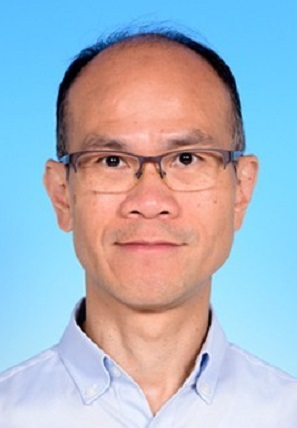
Abstract
The development of cerium-based sustainable chemical processes has attracted much attention in view of the abundance of cerium and relatively low toxicity of cerium salts. Although tetravalent cerium compounds have been widely used as oxidizing agents in organic synthesis, there is a lack of systematic study on the reactivity of oxidizing cerium(IV) complexes toward organic substrates. Recently, it was reported that cerium(IV) alkoxy species can catalyze photochemical C-H functionalization and C-C cleavage, indicating that redox-active cerium(IV) complexes can find applications in organic transformations. Herein, we report the synthesis and characterization of oxidizing cerium(IV) alkoxide, aryloxide, and carbonate complexes supported by a tripodal oxygen ligand. The steric and electronic factors that affect their redox stability and reactivity will be discussed.
Biography
Wa-Hung Leung received his PhD degree from the University of Hong Kong in 1989 under the supervision of Prof. C.-M. Che. After postdoctoral research with Prof. G. Wilkinson at Imperial College, UK, he joined HKUST in 1991, where he is currently Professor of Chemistry. His research interests are coordination and organometallic chemistry, metal-ligand multiple bonds, and lanthanide chemistry.
Abstract
Cancer patients who undergo surgical treatment may show positive surgical margins (PSMs) upon histopathological examination. PSMs are associated with a high risk of recurrence and increased cost of adjuvant therapy. Consequently, identifying tissue malignancy during surgery are critical for optimizing surgical outcomes. The acidification of the extracellular interstitium is a universal phenomenon of solid tumors regardless of their genotypes or phenotypes. Therefore, it may minimize the incidence of PSM by intra-operatively locating the acidic regions. In this study, we fabricate an SERS navigation system that intraoperatively and automatically identifies tumor-infiltrated regions with ISUP grade above 3 by determining tissue acidity. Clinical study included 37 prostate cancer patients, out of 108 men who underwent needle biopsy or surgery. The average interstitial fluid of prostate cancerous tissue (pH 6.67, n=119) is more acidic than that of benign hyperplasia or normal prostatic tissue (pH 6.95, n=159). Furthermore, tissues with higher Gleason grades (ISUP≥3) were characterized with high acidity with pH of 6.39±0.51. This SERS system is promising to identify tissues with ISUP ≥3 from adjacent normal tissues with a sensitivity of 80.0% and specificity of 80.3%. Overall, this system shows promise for locating the PSMs of solid tumor by intra-operatively determining tissue acidity.
Biography
Dr. Cong Li obtained his BS and MS degrees in Chemistry from Wuhan University. He was awarded the Ph.D. degree in Chemistry from University of Hong Kong in 2004. After four years of postdoctoral fellow training in Department of Radiology, School of Medicine of Johns Hopkins University, he started his own lab in 2009 in the School of Pharmacy, Fudan University, where he was promoted to Professor in 2013. Dr. Li has published more than 80 papers as corresponding or first author in prestigious journals such as Nat Biomed Eng, JACS, Angew Chem, Adv Mater, Adv Sci and holds more than ten authorized patents. Dr. Li's work focuses on research frontier of "Molecular Imaging" and their applications in diagnosis and treatment of central nervous system (CNS) diseases. He was awarded the National Science Foundation for Distinguished Young Scholars (2020), the Research Instrument Project of the National Science Foundation (2022).
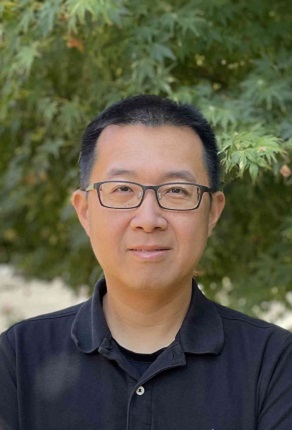
Abstract
This seminar will discuss our recent development of structural and compositional engineered electrochemical materials for energy storage and catalysis. I will discuss how to combine conventional materials/chemical synthesis with 3D printing techniques to develop architected materials for supercapacitors and electrocatalysis. For example, we have developed some hierarchical porous carbons containing different scales of pores interconnected and assembled in hierarchical patterns through a combination of freeze-drying, template, chemical etching, and 3D printing techniques. These porous carbons can be used as electric double layer materials that enable ultrafast charging/discharging even at low temperatures (-70 °C) and as current collectors to support ultrahigh mass loading of pseudo-capacitive materials. The findings pave the way for improving the rate capability of supercapacitors and their capacitances at ultrahigh current densities and mass loadings, which are long-standing challenges for SCs. We also extended this design concept to electrocatalytic materials for water splitting. For example, water electrolysis at high current densities is plagued by gas bubble generation and trapping in stochastic porous electrodes, which causes a significant reduction in the number of electrolyte-accessible catalyst active sites. We demonstrated that 3D-printed Ni electrodes with highly controlled, periodic structures can suppress gas bubble coalescence, jamming, and trapping and result in rapid bubble release. These electrodes decorated with carbon‐doped NiO achieved a high current density of 1000 mA cm−2 in 1.0 m KOH electrolyte at low overpotentials. This work demonstrates a new approach to the deterministic design of 3D electrodes to facilitate rapid bubble transport and release to enhance the total electrode catalytic activity at commercially relevant current densities.
Biography
Yat Li is a Professor of Chemistry at the University of California Santa Cruz. He received his B.Sc. (1999) and Ph.D. (2002) in Chemistry from The University of Hong Kong. He was a postdoctoral fellow at Harvard University from 2003 to 2007. He joined the University of California Santa Cruz as an assistant professor in 2007, was promoted to associate professor with tenure in 2013, and was promoted to full professor in 2018. His research focuses on the rational design, fabrication, and assembly of functional materials. He seeks to understand these materials’ chemical and physical properties and explore their potential applications in catalysis, energy conversion, and energy storage. He has published over 160 papers in leading scientific journals. These publications have been cited ~38000 times, with an H-index of 90. Yat Li has been selected as a Highly Cited Researcher by Clarivate Analytics since 2017. His research accomplishments were also recognized by awards and honors, including the Fellow of the Royal Society of Chemistry (2022), CAPA Distinguished Faculty Award (2018), Kavli Fellow (2012), NSF Career Award (2009), Croucher Foundation Postdoctoral Fellowship (2003), Sir Edward Youde Memorial Fellowship (2002), Li Po Chun Postgraduate Scholarship (2002). Yat Li is serving as an associate editor of Battery Energy, and an editorial board member for a few scientific journals, including Nano-Micro Letters, Science China Chemistry, Frontiers of Optoelectronics, ChemPhysMater, and Catalysts.
Abstract
Electrochemical energy storage continues to be a highly active research field due to its wide application areas ranging from portable devices and wearable electronics to electric vehicles and smart grids1. Supercapacitors have attracted great interest for their high power density and stable cycling2. However, the rather moderate energy density has limited their applications. Traditional carbon based materials function on the double layer capacitance, which can only store limited energy. Recent cutting-edge research has been focusing on the pseudocapacitive type electrode materials, with the charge stored through not only ion adsorption but also near surface redox reactions. Design and syntheses of pseudocapacitive electrode materials, such as metal oxides and conducting polymers, to achieve high specific capacitance with excellent rate capability for supercapacitors is a long-lasting challenge. The low mass loading of pseudocapacitive materials in the electrode due to their poor electrical conductivities is one of the major hurdles for its application. Advances in carbon-based current collector open up new opportunities for addressing this issue. The extraordinary surface area and wide operation potential window of porous carbonaceous nanostructures enable them to be the most promising supporting materials to load plentiful active materials for pseudocapacitors. Among carbon-based materials, graphene is one of the best candidates for nanostructured current collector, due to its excellent electrical conductivity, large theoretical surface area, high flexibility, and good chemical and thermal stability3. In this work, we present a facile electrochemical method to prepare functionalized exfoliated graphite substrate with partial exfoliated graphene sheets atop the graphite base4.The graphene sheets offer large surface area to support pseudocapacitive materials for the fabrication of pseudocapacitive electrodes. The strong attachment of ultrathin functionalized graphene sheets atop the graphite base minimizes the interfacial contact resistance, which substantially improves the specific capacitance and rate capability of pseudocapacitive electrodes, especially with large mass loading5-7.
Biography
Xiao-Xia Liu, Professor of Chemistry Department, Northeastern University, Shenyang, China. She got Doctor’s Degree from The University of Hong Kong, Master’s degree from Northeastern University, and Bachelor’s degree from Jilin University. Her research interest is advanced materials for energy storage, including conducting polymers, inorganic oxides and organic-inorganic hybrid materials. Her research has led to around150 peer-reviewed papers on scientific journals including Angew. Chem. Int. Ed., ACS Energy Lett., Adv. Energy. Mater., ACS Nano, and etc.
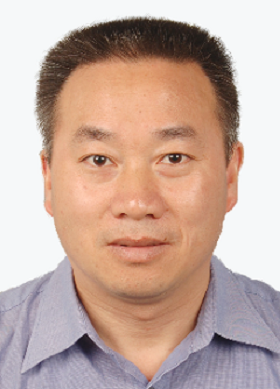
Abstract
Carbon dioxide (CO2) is an abundant, non-toxic, and renewable C1 building block in synthetic chemistry, and chemical fixation of CO2 has received considerable attention as it is consistent with the requirement of green chemistry and sustainability. Various catalysts based on different metals have been developed to catalyze the transformation of CO2, while the application of rare-earth metal complexes in this field remains less explored. Our group has developed a series of rare-earth/Zn(Mg) heterometallic complexes stabilized by bridged poly(phenolate) ligands, which showed high efficiency in catalyzing the cycloaddtion reaction of CO2 and epoxides, and the copolymerization of CO2 and cyclohexene oxide.
Biography
Yingming YAO obtained his B.Sc. degree from Sichuan University in 1990, and his M.Sc and Ph.D. degreees from Changchun Institute of Applied Chemistry, Chinese Academy of Sciences in 1993 (supervisor: Prof. Tianru FANG) and 1996 (supervisor: Prof. Qi SHEN), respectively. During 1997 to 1999, he carried out postdoctoral research in the University of HongKong (supervisor: Prof. Dr. Wing-Tak WONG). He then joined Soochow University in 1999 as an assistant professor, and promoted to full professor in 2004. Now, he is the vice-dean of the College of Chemistry, Chemical Engineering and Materials Science of Soochow University. He has co-authored around 300 publications in peer-reviewed journals. His research interests include synthesis of rare-earth metal complexes and their applications in polymer and organic chemistry.

Abstract
Microalgae have emerged as a promising source of renewable biomass with numerous applications in various industries. We focus on the development of a sustainable platform for the holistic utilization of microalgal biomass, encompassing the cultivation, harvesting, extraction of biomolecules, and particularly their conversion into valuable products through a green catalytic approach. Catalytic processes involving heterogeneous catalysis are employed to convert the biomolecules into valuable products. The emphasis is on developing environmentally friendly and selective catalytic systems that enable the transformation of microalgal biomass into biofuels, bio-based chemicals, and high-value compounds. This talk presents a walkthrough of our search for the sustainable utilization of microalgal biomass, addressing cultivation, harvesting, biomolecule extraction, and green catalytic conversion.
Biography
Prof. YUNG joined The Hong Kong Polytechnic University as Assistant Professor in 2010. He was later promoted to Associate Professor in 2016 and then Professor in 2022. Meanwhile, he was also appointed as the Associate Head of the Department of Applied Biology and Chemical Technology since 2016. He also took up the directorship of the University Research Facilities of Chemical and Environmental Analysis (UCEA) in 2021 which provides analytical support to university-side users with various cutting-edge. Prof. Yung's research endeavors revolve around the surface engineering of metal nanostructures, single-atom sites for catalysis, as well as the synthesis of metal and metal oxide nanostructures for renewable energy applications. His current projects include the development of green catalysts for biomass-related transformation reactions and the exploration of electrocatalytic catalysis using ultralow Pt loading catalysts. Of particular interest is his dedication to establishing a holistic and sustainable platform for unlocking the potential of microalgal biomass in various domains, including fuel, chemical, and feed applications. He has published more than 40 papers in international journals and 8 patents in US, Europe and China. He won the Early Career Award by HKUGC in 2012, the Invention Gold Medal and Grand Prize of the National Council for Research – Thailand of the 43rd International Exhibition of Inventions of Geneva in 2015.
You are welcome to join the PolyU FS Symposium Chemistry for a Sustainable Future: Innovation and Challenges Hosted by the Faculty of Science, The Hong Kong Polytechnic University